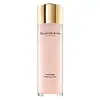What's inside
What's inside
 Key Ingredients
Key Ingredients

 Benefits
Benefits

 Concerns
Concerns

 Ingredients Side-by-side
Ingredients Side-by-side

Zinc Oxide 11.62%
Cosmetic ColorantEthylhexyl Methoxycinnamate 7.4%
UV AbsorberEthylhexyl Salicylate 5%
UV AbsorberWater
Skin ConditioningC12-15 Alkyl Benzoate
AntimicrobialIsodecyl Neopentanoate
EmollientNeopentyl Glycol Diheptanoate
EmollientMagnesium Aluminum Silicate
AbsorbentGlyceryl Stearate
EmollientPEG-100 Stearate
Caprylyl Glycol
EmollientArachidyl Alcohol
EmollientPolyhydroxystearic Acid
EmulsifyingArachidyl Glucoside
EmulsifyingTriethoxycaprylylsilane
Behenyl Alcohol
EmollientXanthan Gum
EmulsifyingBHT
AntioxidantDisodium EDTA
Parfum
MaskingCitral
PerfumingCitronellol
PerfumingGeraniol
PerfumingLimonene
PerfumingLinalool
PerfumingMethylparaben
PreservativePhenoxyethanol
PreservativeIsoamyl P-Methoxycinnamate
UV AbsorberDiethylamino Hydroxybenzoyl Hexyl Benzoate
UV FilterCyclopentasiloxane
EmollientSilica
AbrasiveMethylene Bis-Benzotriazolyl Tetramethylbutylphenol
UV FilterPotassium Cetyl Phosphate
EmulsifyingDicaprylyl Carbonate
EmollientDibutyl Adipate
EmollientBis-Ethylhexyloxyphenol Methoxyphenyl Triazine
Skin ConditioningEthylhexyl Triazone
UV AbsorberCetyl Dimethicone
EmollientTriethylhexanoin
MaskingGlycerin
HumectantAcrylates Copolymer
Oryza Sativa
Biosaccharide Gum-4
Skin ConditioningButylene Glycol
HumectantCetyl Alcohol
EmollientCyclohexasiloxane
EmollientDecyl Glucoside
CleansingDimethicone Crosspolymer
Emulsion StabilisingEthylhexylglycerin
Skin ConditioningHydrogenated Palm Glycerides Citrate
EmollientHydrolyzed Soy Protein
HumectantHydrolyzed Wheat Protein
Skin ConditioningPhenylpropanol
MaskingPropylene Glycol
HumectantSchizophyllan
HumectantSodium Polyacrylate
AbsorbentSorbitan Stearate
EmulsifyingTocopherol
AntioxidantTocopheryl Acetate
AntioxidantTriethanolamine
BufferingTripeptide-1
Skin ConditioningBenzyl Alcohol
PerfumingEthylparaben
PreservativeO-Cymen-5-Ol
AntimicrobialPropylparaben
PreservativeZinc Oxide 11.62%, Ethylhexyl Methoxycinnamate 7.4%, Ethylhexyl Salicylate 5%, Water, C12-15 Alkyl Benzoate, Isodecyl Neopentanoate, Neopentyl Glycol Diheptanoate, Magnesium Aluminum Silicate, Glyceryl Stearate, PEG-100 Stearate, Caprylyl Glycol, Arachidyl Alcohol, Polyhydroxystearic Acid, Arachidyl Glucoside, Triethoxycaprylylsilane, Behenyl Alcohol, Xanthan Gum, BHT, Disodium EDTA, Parfum, Citral, Citronellol, Geraniol, Limonene, Linalool, Methylparaben, Phenoxyethanol, Isoamyl P-Methoxycinnamate, Diethylamino Hydroxybenzoyl Hexyl Benzoate, Cyclopentasiloxane, Silica, Methylene Bis-Benzotriazolyl Tetramethylbutylphenol, Potassium Cetyl Phosphate, Dicaprylyl Carbonate, Dibutyl Adipate, Bis-Ethylhexyloxyphenol Methoxyphenyl Triazine, Ethylhexyl Triazone, Cetyl Dimethicone, Triethylhexanoin, Glycerin, Acrylates Copolymer, Oryza Sativa, Biosaccharide Gum-4, Butylene Glycol, Cetyl Alcohol, Cyclohexasiloxane, Decyl Glucoside, Dimethicone Crosspolymer, Ethylhexylglycerin, Hydrogenated Palm Glycerides Citrate, Hydrolyzed Soy Protein, Hydrolyzed Wheat Protein, Phenylpropanol, Propylene Glycol, Schizophyllan, Sodium Polyacrylate, Sorbitan Stearate, Tocopherol, Tocopheryl Acetate, Triethanolamine, Tripeptide-1, Benzyl Alcohol, Ethylparaben, O-Cymen-5-Ol, Propylparaben
Water
Skin ConditioningAlcohol Denat.
AntimicrobialIsododecane
EmollientGlycerin
HumectantCeramide 3
Skin ConditioningAnthemis Nobilis Flower Extract
MaskingMalva Sylvestris Extract
AstringentRosmarinus Officinalis Leaf Extract
AntimicrobialSalvia Officinalis Leaf Extract
CleansingSambucus Nigra Flower Extract
RefreshingYeast Extract
Skin ConditioningPropylene Glycol
HumectantCholesterol
EmollientSorbitan Oleate
EmulsifyingIsostearic Acid
CleansingCitric Acid
BufferingTriethanolamine
BufferingMethylparaben
PreservativeCI 14700
Cosmetic ColorantCI 19140
Cosmetic ColorantWater, Alcohol Denat., Isododecane, Glycerin, Ceramide 3, Anthemis Nobilis Flower Extract, Malva Sylvestris Extract, Rosmarinus Officinalis Leaf Extract, Salvia Officinalis Leaf Extract, Sambucus Nigra Flower Extract, Yeast Extract, Propylene Glycol, Cholesterol, Sorbitan Oleate, Isostearic Acid, Citric Acid, Triethanolamine, Methylparaben, CI 14700, CI 19140
 Reviews
Reviews

Ingredients Explained
These ingredients are found in both products.
Ingredients higher up in an ingredient list are typically present in a larger amount.
Glycerin is already naturally found in your skin. It helps moisturize and protect your skin.
A study from 2016 found glycerin to be more effective as a humectant than AHAs and hyaluronic acid.
As a humectant, it helps the skin stay hydrated by pulling moisture to your skin. The low molecular weight of glycerin allows it to pull moisture into the deeper layers of your skin.
Hydrated skin improves your skin barrier; Your skin barrier helps protect against irritants and bacteria.
Glycerin has also been found to have antimicrobial and antiviral properties. Due to these properties, glycerin is often used in wound and burn treatments.
In cosmetics, glycerin is usually derived from plants such as soybean or palm. However, it can also be sourced from animals, such as tallow or animal fat.
This ingredient is organic, colorless, odorless, and non-toxic.
Glycerin is the name for this ingredient in American English. British English uses Glycerol/Glycerine.
Learn more about GlycerinMethylparaben is a preservative and is a paraben. It is used to prevent the growth of fungus, mold, and other harmful bacteria. Parabens are chemicals used as preservatives in both cosmetics and food.
Methylparaben can be synthetically created. It can also be found naturally in some fruits, such as blueberries.
Oftentimes, Methylparaben is combined with other parabens to help increase the shelf life.
The safety of Methylparaben is currently being studied. While ongoing studies are looking into the safety of parabens, the results have been very mixed. Some studies have not found Methylparaben to be harmful.
Learn more about MethylparabenPropylene Glycol is an odorless, colorless liquid. As a humectant, it helps skin retain moisture. It also aids in delivering active ingredients.
Another role of this ingredient is preventing a product from melting or freezing. Propylene glycol also adds antimicrobrial properties to a product, elongating product lifespan.
This ingredient is considered an organic alcohol and commonly added into both cosmetics and foods.
Those with sensitive skin or conditions may develop a rash when using this ingredient.
Learn more about Propylene GlycolTriethanolamine is an emulsifier and pH adjuster. It is created using ethylene oxide and ammonia. This gives Triethanolamine a nitrogen core and a similar scent to ammonia.
As an emulsifier, it prevents ingredients from separating and enhances texture by adding volume to a product.
PH adjusters are common in cosmetic products. The pH of a product can affect the effectiveness of other ingredients. A product with a high pH may also irritate the skin.
Learn more about TriethanolamineWater. It's the most common cosmetic ingredient of all. You'll usually see it at the top of ingredient lists, meaning that it makes up the largest part of the product.
So why is it so popular? Water most often acts as a solvent - this means that it helps dissolve other ingredients into the formulation.
You'll also recognize water as that liquid we all need to stay alive. If you see this, drink a glass of water. Stay hydrated!
Learn more about Water